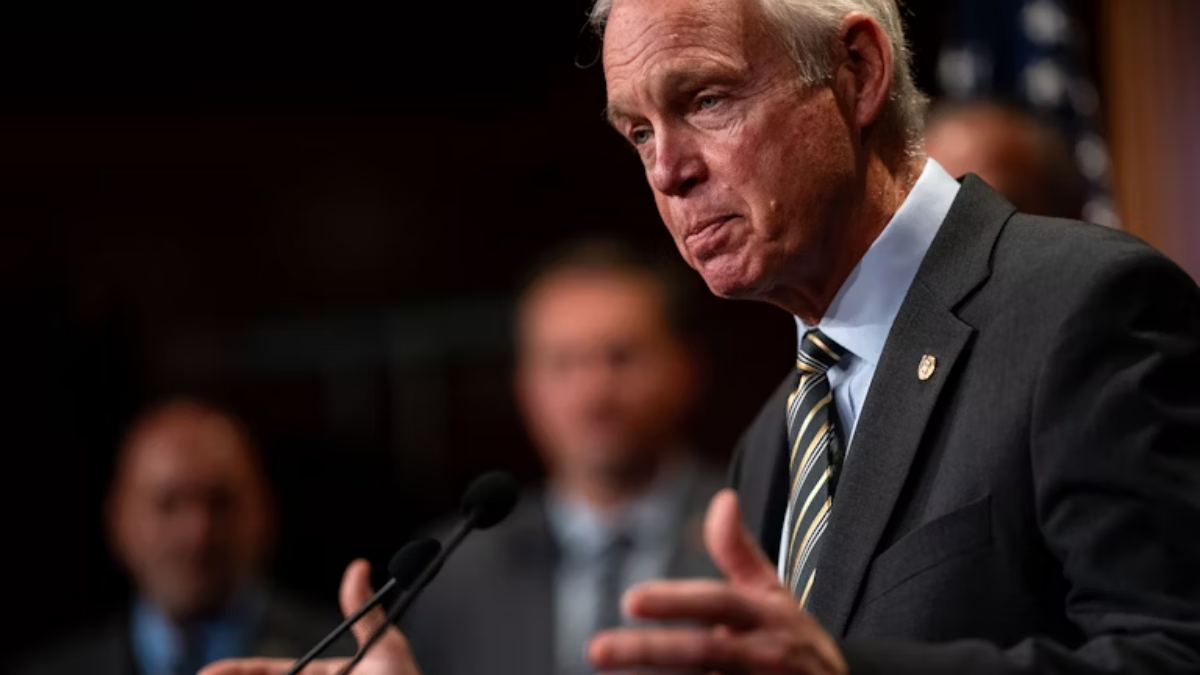As the global trade landscape continues to evolve, former President Donald Trump’s approach to tariffs has remained a key point of focus. Recently, Senator Ron Johnson (R-WI) made headlines by emphasizing that Trump’s trade policies, particularly those involving new tariffs, are part of a broader strategy focused on “fair trade.”
This statement has sparked significant discussions regarding the future of U.S. trade policy and the economic implications of the tariffs on American businesses and consumers.
1. Understanding the Concept of “Fair Trade”
“Fair trade” is a term that has been used by politicians, business leaders, and activists to describe a trade system that emphasizes equitable treatment for workers, protection of local industries, and reducing unfair trade practices by foreign countries.
While “free trade” has traditionally been the cornerstone of U.S. economic policy, the Trump administration’s stance has shifted toward creating trade deals that put American interests first.
The main aim of “fair trade” under Trump’s philosophy was to ensure that trade partners do not manipulate currency or impose tariffs that disadvantage U.S. products.
2. Trump’s Tariff Strategy: A New Era of Trade Policy
Trump’s use of tariffs was one of the hallmark features of his administration’s approach to international trade. Throughout his presidency, he implemented tariffs on steel, aluminum, and various goods from countries like China, Mexico, and the European Union.
These tariffs were part of his broader strategy to rebalance trade imbalances and reduce the U.S. trade deficit. In particular, his trade war with China was centered around accusations of unfair trade practices, including intellectual property theft and market manipulation.
According to Trump and his supporters, these tariffs were a necessary tool to protect American industries from unfair competition. The goal was to force foreign countries, particularly China, to play by U.S. trade rules.
As Trump’s former advisor Peter Navarro pointed out, the tariffs were designed to push countries into negotiating better deals, thus ensuring a more “level playing field.”
Senator Johnson’s assertion that Trump is focused on “fair trade” further reinforces the idea that tariffs were not intended to punish other countries but rather to create an environment where U.S. businesses could compete on equal terms.
3. The Impact of Tariffs on U.S. Consumers and Businesses
While Trump’s tariff policies were designed to protect American industries, the impact on U.S. consumers and businesses was mixed. On one hand, tariffs on foreign goods led to price increases for consumers, particularly in sectors like technology and automobiles.
For example, tariffs on Chinese-made electronics increased costs for American consumers purchasing smartphones, laptops, and other products.
On the other hand, tariffs did benefit some American industries, particularly steel manufacturers, who saw an increase in demand for domestically produced steel. American workers in certain manufacturing sectors also saw job growth as companies shifted production back to the U.S. in response to tariff policies.
However, these benefits were often offset by the higher costs for businesses that rely on imported materials and components, leading to a complex trade-off between protecting domestic jobs and increasing costs for consumers.
4. The Role of Congress in Shaping Trade Policy
While Trump’s tariff policies were a major part of his administration’s approach, trade policy is not solely determined by the president.
Congress also plays a critical role in shaping trade policy through the approval of trade agreements, the regulation of tariffs, and the imposition of sanctions. Senator Ron Johnson’s comments reflect an ongoing debate within Congress about the future of U.S. trade policy and how best to protect American interests.
As a member of the Senate, Johnson’s perspective on “fair trade” is likely to influence future trade legislation. His comments suggest that there may be a growing sentiment in Congress to push for more equitable trade agreements that align with the interests of American workers and businesses.
This shift toward “fair trade” could pave the way for new tariffs or trade restrictions designed to ensure that U.S. companies are not at a disadvantage in the global marketplace.
5. The Global Response to U.S. Tariffs
The global response to U.S. tariffs has been mixed. While some countries have agreed to negotiate new trade deals with the U.S., others have retaliated with tariffs of their own, leading to a rise in global trade tensions.
The trade war with China, in particular, escalated as both countries imposed tariffs on hundreds of billions of dollars’ worth of goods.
While the long-term effects of Trump’s tariff policies are still being debated, there is no doubt that his administration’s approach reshaped the global trade landscape.
Moving forward, the challenge will be to maintain a focus on “fair trade” while navigating the complex web of international relations and economic interests.
6. The Future of U.S. Trade Policy
Looking ahead, the focus on “fair trade” is likely to remain a significant aspect of U.S. trade policy, especially as new global trade agreements are negotiated. As President Biden’s administration continues to navigate trade relationships, the balance between protecting American interests and fostering international cooperation will be key.
Johnson’s comments suggest that there will be continued debate over how best to achieve a fair trade system that benefits American workers and businesses without sacrificing global competitiveness.
Conclusion
Senator Ron Johnson’s remarks about former President Trump focusing on “fair trade” amid new tariffs highlight a shift in U.S. trade policy that prioritizes the protection of American industries and workers. While tariffs have had mixed results, Trump’s trade strategy aimed to create a level playing field in global trade.
Moving forward, the question will be how to maintain this focus on fairness while managing the complexities of international trade relations and their impact on U.S. consumers and businesses.
For more insights into U.S. trade policies and economic strategies, visit Trade Policy Review.
Disclaimer – Our team has carefully fact-checked this article to make sure it’s accurate and free from any misinformation. We’re dedicated to keeping our content honest and reliable for our readers.
